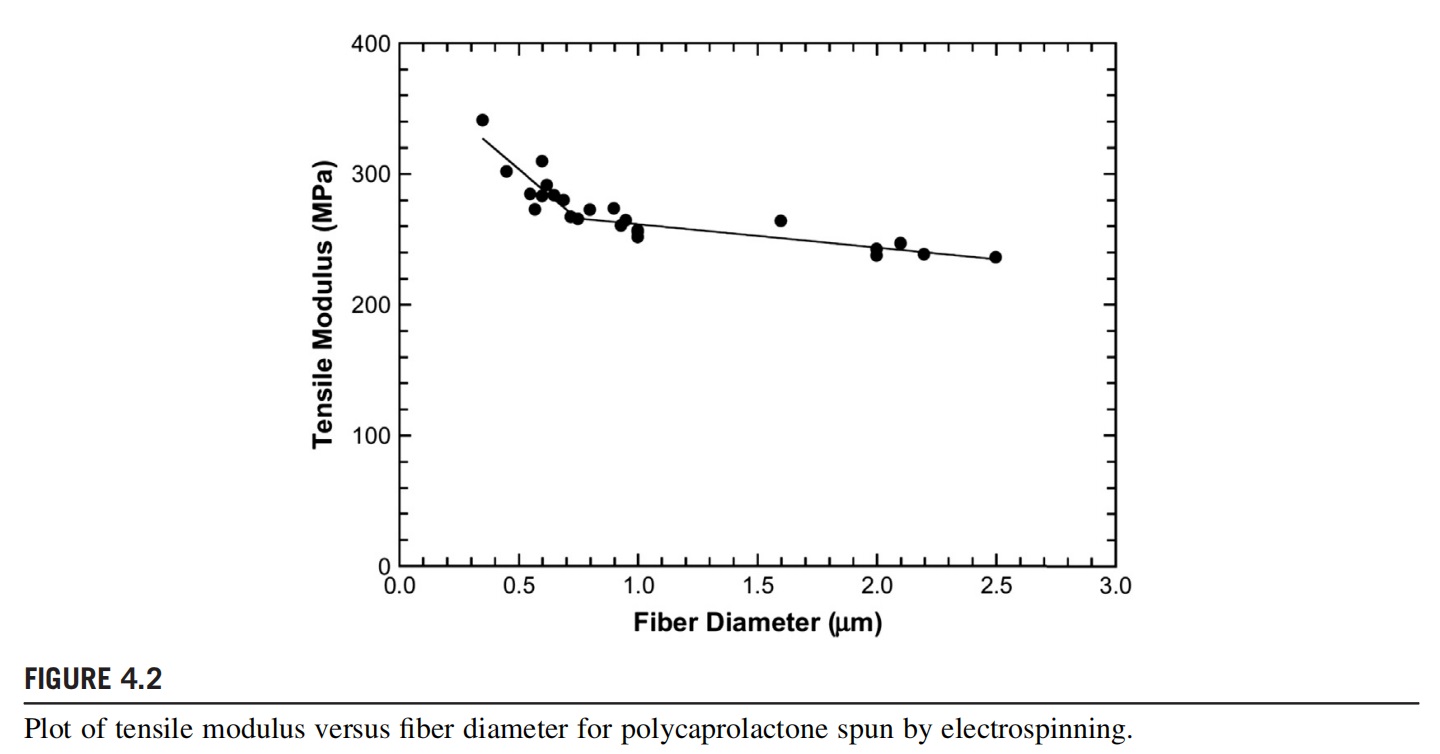
NANO OVER MICRO, MESO, AND MACRO
Hierarchal complex structures with small dimensions can provide advantages over larger dimensions at several occasions, owing to the increased surface area. One such example is the artificial scaffolds for tissue engineering mimicking ECM. The cells binding to scaffolds with microscale architectures flatten and spread as if cultured on flat surfaces. This might be different for some exceptional cells. The scaffolds with nanoscale architectures have a bigger surface area for absorbing proteins and present more binding sites to cell membrane receptors. The adsorbed proteins can further change the conformation, exposing additional binding sites, which is expected to provide an edge over microscale architectures for tissue generation applications. Other applications in which dimensions in the nanoscale improve performance are filtration and reinforcement in making composites. Air and liquid filtration is a physical phenomenon: particles of size larger than the average pore size at the surface are filtered (sieve effect). The filtration efficiency is dependent upon the pore size, which in turn depends upon the fiber diameter. The mean pore size is generally three to four times the size of the mean fiber diameter. This means the pore size is reduced upon decreasing the fiber diameter and, therefore, the efficiency of filtering the smaller particles increases. State-of-the-art filters contain thick (micrometer) fiber networks with big pores. During air purification, the particles get trapped in the depth of the state-of-the-art filters, thereby increasing the pressure drop with time and cleaning cycles. The problem is overcome by the use of nanofibers (100e200 nm fiber diameter). The thinner fibers also are stronger and provide more efficient improvement in mechanical properties (Fig. 4.2) when used as reinforcing filler, because of the large specific surface area increasing the interface bonding strength between the matrix and the filler (Wong et al., 2008). The mechanical properties improve for lower-diameter fibers, due to molecular orientation and increased crystallinity. These are some of the applications in which the effect of nano is very obvious.

